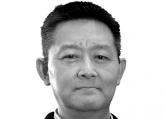Hybridisation – energy sources, intelligence, and human consumption
By Akira TokuhiroSeveral months ago, I happened to see an NHK World's web-based documentary on a Japanese city called Kashiwa-no-ha (KNH) "Smart City" – an institutional collaborative initiative partnering municipal (Chiba Prefecture, Kashiwa City), commercial/business, and educational (universities) entities1.
The three broad objectives of this initiative is as follows; that is, to move Kashiwa-no-ha to be: 1) an Environmental-Symbiotic City that is environmentally friendly, 2) a City of New Industry Creation that fosters commercial growth that generates new vitality for Japan, and 3) a City of Health and Longevity with people of all ages enjoying healthy and secure lives.
Kashiwa-no-ha hopes to leverage both tangible and intangible means including the enthusiasm of its residents (and visitors) to pursue ‘optimal solutions’ along these objectives to materialise a "New Vision for the Cities of Tomorrow".
First of all, I commend initiatives such as these in municipalities on the outskirts of what I call "world cities". They are symbolic relative the present state-of-affairs that is simply wasteful and unsustainable. However, as often said in English, "the devil is in the details" – the tangible is often challenging to implement because as I noted before in my previous column, the interaction of humans, machines determine the outcome. Allow me to provide additional perspective.
In terms of "energy", KNH is trying to manage its energy needs in a way that changes the status-quo of producing and consuming electricity. That is, in contrast to a dated, decoupled approach, the objective now includes an environmentally friendly and cost-efficient technology at its "core"; that is, simply a power management network that integrates both conventional and renewable power sources with emerging storage and distribution systems.
KNH's "Smart Center", a control center that measures/monitors and displays "energy flows", has already reported reduction of peak power consumption by some 26%. KNH claims the obvious – that energy is conserved and CO2 emissions have been reduced.
KNH key technology component is Japan's biggest lithium-ion storage cell systems2, as well as solar and emergency gas-powered generators. The facility integrates power generation, conservation, and storage, and was the first in Japan to share power beyond a private grid.
The installed NAS battery system is equipped to function as an emergency power source during a power outage or to reduce peak demand during routine operations. The system has a rated output of 1,800 kW and a rated capacity of 12,960 kWh at a 7.2-hour discharge period.
Let me now focus on the research-oriented aspects using the overarching concept of LENDIT (length, energy, number, distribution, information, and time) I previously noted in Asian Power. It seems that regardless of the primary energy source (typically energy plants of larger scale, based on nuclear or fossil fuels), that now shares connection to an electricity grid with renewable sources (solar, wind, etc.), realisation of hybrid systems is a matter of optimising the supply and demand that characteristically vary in time and distribution.
In fact, this is as simple as the weather itself – the solar cycle and the weather (wind, rain, etc.) that accompany it, versus human consumption of energy, perhaps quasi-synchronised with sunrise (in daily, initial consumption) but in modern societies equally consuming energy after sunset. Fortunately, most of humanity sleeps at some time over a 24-hour cyclic timespan.
So, if one were to simply graph supply and demand, there is indeed a mismatch.
Technically, this is a mismatch, foremost in time (T; timelag) but also, it is self-evident that hybrid energy systems have to deal, on the supply side, with the realities of distributed (D) energy sources and components (N-number) and energy magnitude (E). Windpower is small when compared to a single conventional nuclear plant.
On the demand side, the consumers are equally characterised in number, distribution, and time (N, D, T); human consumers also demand information (I). The key is thus the process flow computer – that is, an "intelligent control system" (ICS), realised via a software featuring artificial neural networks (ANN), and thus an ability to "learn" and characterise the non-linear/relatively complicated relationships between the linkage of supply and demand.
This ICS of course resides on a system of computers/processors and/or "smart" control systems; configured typically in a debated, centralised control or distributed manner. The management of distributed information (D, I) is one of the hybrid energy system challenges.
One might imagine such a system as an airport wherein there is a control tower (central control) and airplanes (distributed control) of various scales carrying 'flowing' cargo of people and goods. The optimisation problem here is to generally reduce the time to unload and load cargo.
In contrast in hybrid energy systems as part of smart cities, electricity may be the main flowing 'commodity', since its storage is technology-limited. However, I propose that water (potable and/or non-potable) and gases (air) be included, because both liquid and gas can store both thermal and 'kinetic' energy such as pressurised gas.
Further, we tend to discharge lower-grade thermal energy because we over-focus on higher-grade thermal energy. There are many low-grade thermal, industrial applications, especially when combined with closed-loop water and electrical systems. This suggests 'systems of systems' of ICS.
Finally, as energy storage of any kind has the effect of 'decoupling' energy and time (E, T), stored energy functions as the 'buffer' that can be accessed 'on-demand' but limited in storage magnitude capacity.
In conclusion, a smart city is more than simply managing the electricity demand based on a computer-controlled hybrid energy source. One should expand the systems options and storage options to include liquids and gases so that as much of the thermal, kinetic, and electrical energies generated can be distributed and/or stored.
1Cf. https://www.kashiwanoha-smartcity.com/en/
2Cf. https://www.ngk.co.jp/english/news/2015/0128.html
























 Advertise
Advertise








